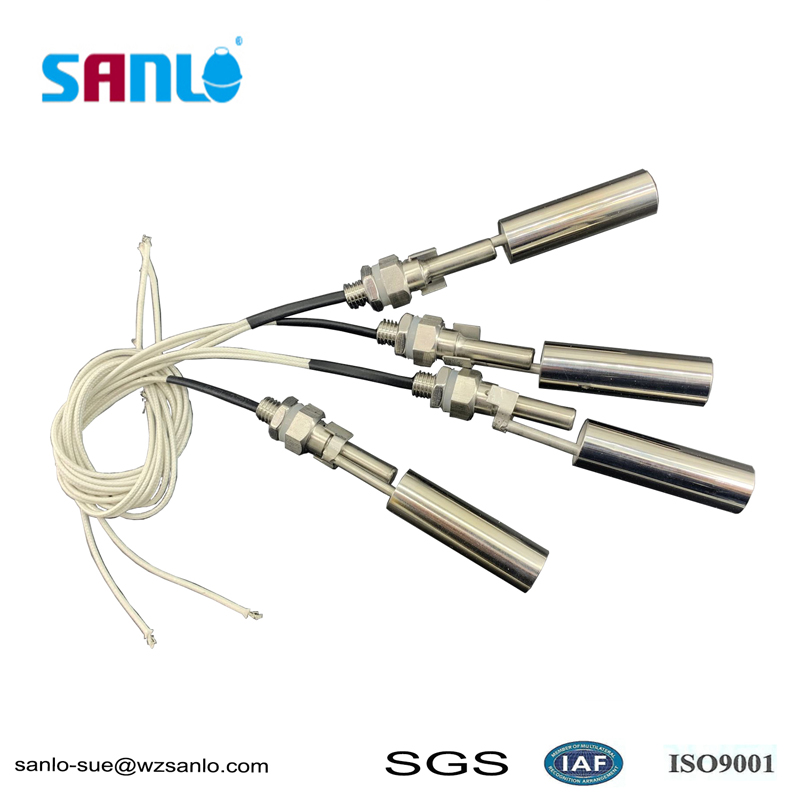How Does a Liquid Float Level Switch Improve Efficiency in Industrial Applications?
2024-12-20
In industrial processes, the ability to monitor and control the levels of liquids in tanks, vessels, and other containers is crucial for maintaining safety, optimizing operations, and preventing costly damage. One key device that plays a significant role in this process is the liquid float level switch.
But what exactly is a liquid float level switch, and how does it contribute to improving efficiency and safety in industrial settings? In this blog, we’ll explore the working principles of this device, its key applications, and the benefits it provides across various industries.
What is a Liquid Float Level Switch?
A liquid float level switch is a simple yet highly effective device used to monitor the level of liquids within a container. As the liquid rises or falls, the float, which is attached to a sensor, moves accordingly, triggering a signal to alert the system or operator about the liquid level. This signal can be used to control pumps, valves, alarms, or other equipment, ensuring that liquid levels remain within the desired range.
Liquid float level switches are typically used in water treatment plants, chemical processing facilities, oil and gas refineries, and manufacturing plants, among others. They offer an affordable and reliable solution for automatic level control in a wide range of industrial applications.
How Does a Liquid Float Level Switch Work?
The basic operation of a liquid float level switch involves the following components:
- Float: A buoyant object that sits on the surface of the liquid. As the liquid level rises or falls, the float moves with it.
- Magnetic or Mechanical Sensor: The float is connected to a sensor (often magnetic), which detects the float’s position and sends an electrical signal.
- Actuation: When the liquid reaches a predetermined level, the float triggers the sensor, which activates or deactivates a switch. This can control other devices, such as a pump or alarm.
In some designs, the float is part of a magnetic system that communicates with external switches. For example, as the float rises, it moves a magnet that interacts with a reed switch, which in turn controls the flow of electricity to activate or stop pumps, valves, or alarms.
Key Applications of Liquid Float Level Switches
Tank Level Monitoring in Manufacturing
In manufacturing plants, maintaining the correct level of liquid chemicals, solvents, or water in storage tanks is essential for both process efficiency and safety. A liquid float level switch provides accurate, real-time monitoring, reducing the risk of overflows, spills, and equipment damage.
For example, in a chemical plant, an overflow or underflow could lead to costly production halts or dangerous chemical reactions. A float level switch ensures that the liquid remains within safe limits, preventing these issues.
Water Treatment and Wastewater Management
Water treatment facilities rely heavily on level monitoring systems to ensure that tanks and reservoirs are adequately filled or emptied. A liquid float level switch helps control the levels of water in filtration tanks, holding tanks, and reservoirs. By automatically triggering pumps when the water level is too low or too high, these switches help optimize water usage and ensure a steady supply of clean water.
In wastewater treatment plants, liquid float level switches are used to prevent overflows or underflows in various treatment tanks, maintaining process consistency and compliance with environmental standards.
Oil and Gas Industry
The oil and gas industry involves storing and transporting large quantities of liquids, such as crude oil, water, and chemicals. Accurate level monitoring is crucial in these applications to prevent dangerous overflows, ensure safe operations, and optimize resource management.
For instance, in oil refineries, liquid float level switches are often used to monitor the levels in tanks that store chemicals or oil products. By keeping the liquid levels under control, they help reduce risks and improve operational efficiency.
HVAC Systems and Cooling Towers
In HVAC (Heating, Ventilation, and Air Conditioning) systems, liquid float level switches are used to monitor the levels of water or refrigerants in cooling towers and heat exchangers. Maintaining proper fluid levels is essential for efficient heat transfer and preventing damage to equipment.
For example, in a cooling tower, if the water level falls too low, it can cause pump cavitation or overheating, potentially leading to equipment failure. A float level switch ensures that water is consistently added to the system, avoiding such issues.
Agriculture and Irrigation Systems
In agriculture, water management is a vital concern. Liquid float level switches are used in irrigation systems, reservoirs, and water tanks to maintain the optimal water level for crops. By automating the water supply based on the current liquid level, these switches ensure that the system operates efficiently, reducing water waste and improving crop yields.
Battery-Operated and Portable Devices
Some industries, such as marine and portable devices (like coolers or off-grid energy systems), use small, battery-operated liquid float level switches. These switches offer a compact, energy-efficient solution for low-volume liquid level monitoring, helping to manage water in off-grid systems, small fuel tanks, or portable containers.
Benefits of Using Liquid Float Level Switches
Automation and Efficiency
Liquid float level switches allow for automatic control of liquid levels, reducing the need for manual intervention. This automation improves the overall efficiency of industrial processes by ensuring that equipment runs smoothly and liquid levels remain within the desired range.
Cost-Effective Solution
Compared to more complex electronic sensors or ultrasonic systems, liquid float level switches are relatively inexpensive. They provide a low-cost option for industries looking to implement reliable liquid level monitoring without breaking the budget.
Safety and Risk Reduction
By continuously monitoring liquid levels, liquid float level switches help prevent accidents such as overflows, spillage, and tank damage. These safety measures are particularly important in industries dealing with hazardous or volatile liquids, where uncontrolled liquid levels could lead to catastrophic outcomes.
Simplicity and Reliability
Liquid float level switches are easy to install, require little maintenance, and are highly reliable in various industrial environments. Unlike more complex sensor-based systems, float switches do not rely on complex electronics, making them less prone to failure and easier to troubleshoot.
Versatility in Applications
Float level switches come in a variety of designs and materials, making them versatile for use in different industries. Whether you are monitoring water, chemicals, oils, or even slurries, there’s a liquid float level switch designed for the job. The wide range of application options makes these devices ideal for everything from food and beverage production to heavy industrial processes.
Choosing the Right Liquid Float Level Switch
When selecting a liquid float level switch for your application, there are several factors to consider:
- Type of Liquid: Ensure the material of the float switch is compatible with the type of liquid being monitored. Some liquids may be corrosive or have high temperatures, requiring special materials like stainless steel or plastic.
- Level Control Requirements: Determine if you need a single-point switch (for high or low-level monitoring) or a multi-point switch (for more complex control of liquid levels at various stages).
- Environment and Durability: Consider the working environment of the switch. Will it be exposed to extreme temperatures, pressure, or harsh chemicals? Choose a float switch that can withstand the conditions.
- Accuracy: Depending on the level of precision required for your application, you may need a float switch with high sensitivity or specific actuation points.
Conclusion
A liquid float level switch is a simple yet highly effective tool for automating liquid level control across many industries. Its applications range from chemical manufacturing and water treatment to oil production and HVAC systems. By offering a cost-effective, reliable, and easy-to-maintain solution, these switches help improve efficiency, reduce risks, and ensure the safety of operations.



